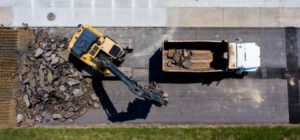Many people are not sure when or even if they require development approval for a project they are considering. Under the Planning Act 2016 in Queensland, a development application (DA for short) may be required when you want to develop.
You need a DA when you are looking to do any of the following:
- Building work
- Carrying out plumbing or drainage work
- Doing operational work
- Reconfiguring a lot (commonly called subdivision)
- Changing the use of a premise.
That is all good and well but you may think to yourself, what on earth does it all mean? In such cases, the advice of a town planner is invaluable. Not only can they advise whether you need development approval in the first place, they can also help guide you through the process or make suggestions that save you time or money.
Generally, it is a Planning Scheme that will dictate whether development is assessable or not. First you need to identify what type of development is proposed out of the five categories listed above, which could fall into any of the following categories of development:
- accepted development (ie. exempt); or
- accepted development subject to identified requirements (formerly self-assessable); or
- Assessable development (this could be code (non-advertised) or impact (advertised) assessable).
Building work
Typically you will be considered to be undertaking building work if you are building a new residential dwelling or extending, demolishing or relocating an existing one. If what you are doing fits into any of these descriptions, you are almost certainly going to require development approval from your private building certifier.
However, a Planning Scheme may also regulate building work so in some cases you may also need a DA from Council to enable Council to assess your proposal.
In a lot of cases things like adding a deck, carport, garage, or shed or even building a new house are accepted development however it all depends on the zoning of the property and whether any Planning Scheme overlays trigger assessment and against what requirements. In many cases where your project is accepted development and you can’t, or don’t, meet the identified requirements, your project becomes assessable development and you need to get a DA.
Plumbing and drainage work
All work must meet the legislative requirements but whether you need council approval depends on the type of work. Minor work that involves things like installation or removal of fixtures or fittings doesn’t require council approval but must be undertaken by a licensed professional.
Other work falls into one of two categories – notifiable work or compliance assessable work. Notifiable work doesn’t need council approval and usually encompasses everyday plumbing and drainage work on existing buildings, but compliance assessable work does. Examples of compliance assessable work include:
- Plumbing as part of the construction of a new building or structure
- Work that is likely to involve discharge of prohibited substances into a sewer via an onsite waste disposal system
- Drainage work for a building or structure served by a combined drain
- Work involving a dual reticulated water supply provided by a water service provider
- Work that involves an alternative solution under a plumbing code or regulation.
Operational works [OPW]
This type of work includes things like excavation or filling, clearing vegetation, road works or other infrastructure, landscape work or in some cases installation of advertising devices.
Earthworks and advertising devices tend to be the only types of operational works triggered by a Planning Scheme. The majority of operational works development approvals required are triggered by the conditions of a development approval for either Building Work, Reconfiguring a Lot or a Material Change of Use. A town planner can help you through this part of the process.
Reconfiguring a lot (Subdivision) [ROL]
The level of approval you require for subdividing a lot really depends on the size of the lot and how your property is affected by zoning, overlays and/or a neighbourhood plan. A town planner can help you understand the specific approvals that will likely be required for your intentions.
The following activities usually always require a DA for Reconfiguring a Lot:
- creating new lots from subdividing another lot
- rearranging lot boundaries without creating a new lot
- a ‘volumetric subdivision’ (using space above or below the land)
- dividing land into parts by agreement
- creating an easement to give a lot access from a road.
Due to the variable requirements depending on your property, it is best to ask for a free desktop assessment of your site to fully understand the approvals you need and their indicative costs.
The following are situations where you generally won’t need approval:
- building format plans that do not subdivide land on or below its surface
- merging/amalgamation of existing lots
- incorporation of a lot with common property for a community title scheme
- conversion of lessee common property to a lot in a community title scheme
- subdivision for road widening purposes and truncations
- subdivision where required by State legislation.
However, in all of these cases, you will still need to go through the Plan Sealing process with Council and the registration process with the Titles Office.
Changing the use of premises (Material Change of Use/MCU)
Typically this is when you are looking to change the way a property is being used, for example converting a Queenslander into a child care centre or building a unit development on vacant land. You may also need development approval if you plan to start a new use of the property, re-establish a use that has been abandoned or change the scale of an existing use at the property.
Given the number of site-specific variables and differences between planning schemes, town planning advice saves you time figuring out what does require approval and the potential costs associated with your plans. You can also read more about the development application process in our article.
Contact us to discuss your project’s specific requirements and take advantage of our free desktop review service via office@consultplanning.com.au or call 1300 017 540.
Disclaimer: While every effort has been made to provide accurate information, Consult Planning does not guarantee that this blog article is free from errors or omissions or is suitable for your intended use.







